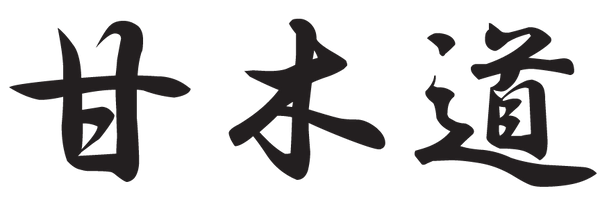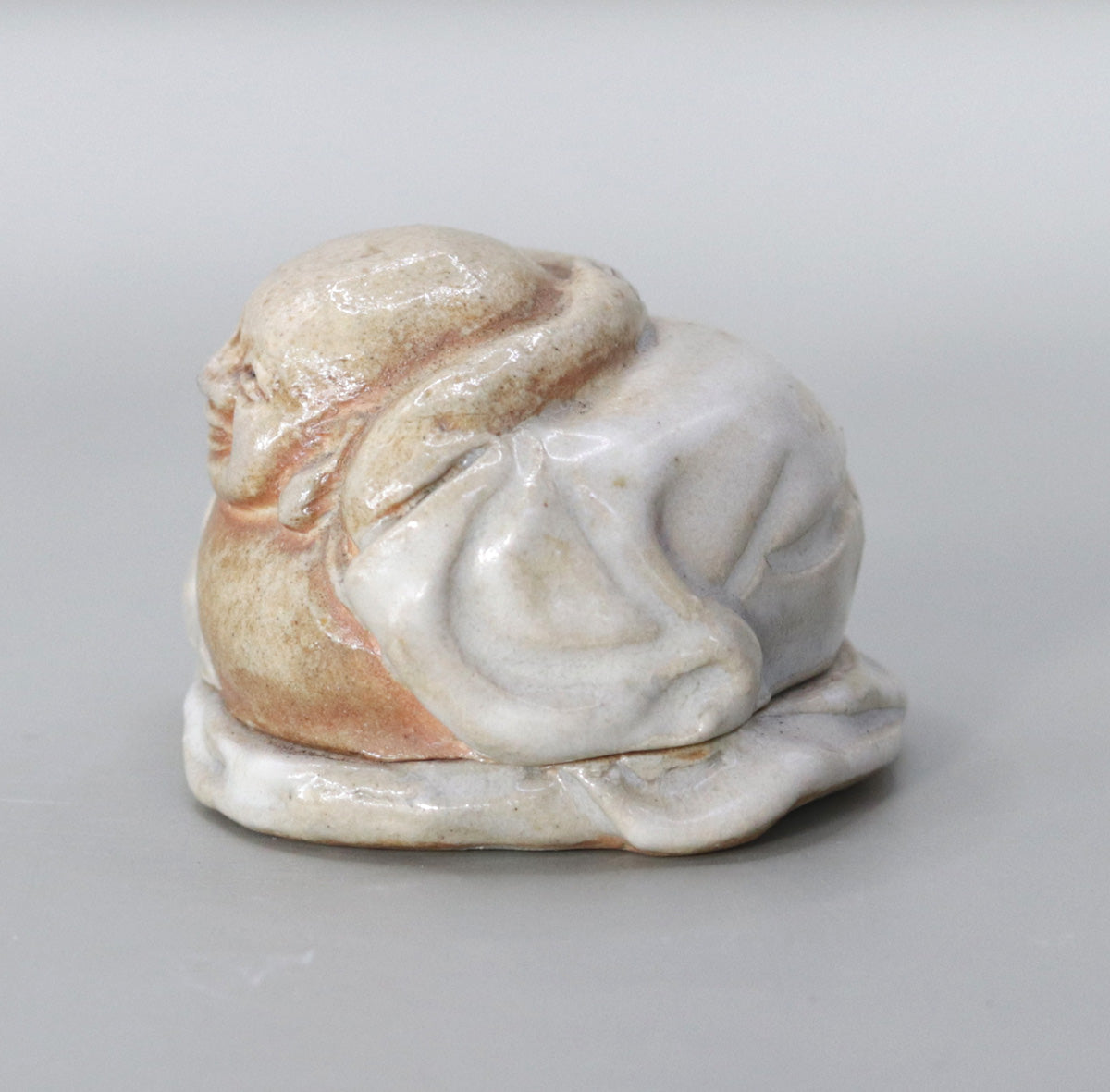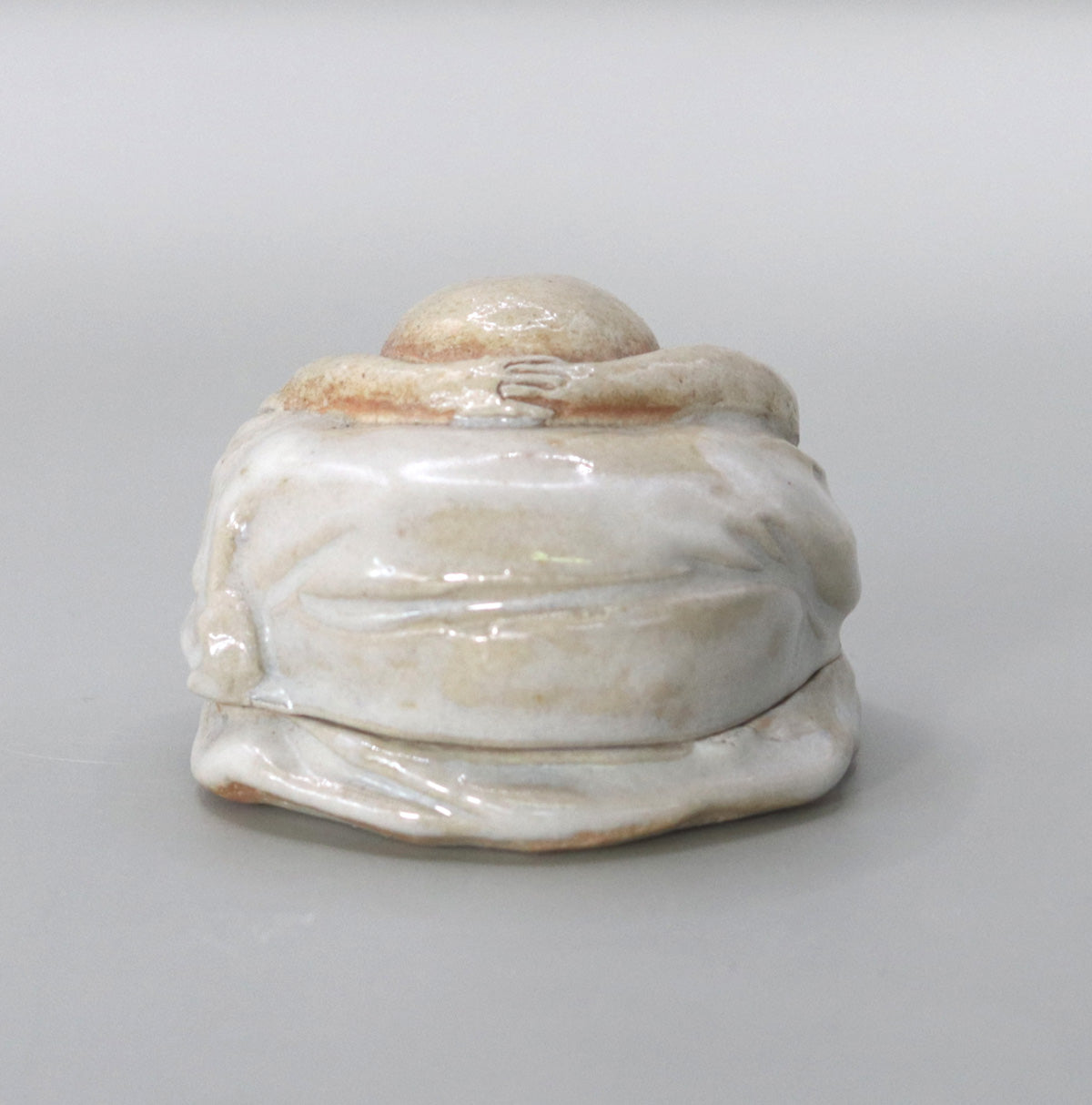Hotei incense holder by Rakusai Onishi
Hotei incense holder by Rakusai Onishi
Couldn't load pickup availability
Width: 6.3cm x 6.3cm Height: 4.6cm
Hotei incense holder (Hotei-kogo) Made by Rakusai Onishi
--The Seven Lucky Gods in the palm of your hand, bringing good fortune with a smile--
1. Work summary
This is a Hotei-shaped incense container made by Onishi Rakusai, the eighth generation of Akahada-yaki pottery in Nara. Its round belly and cheerful smile are adorable, and it is divided into two parts, top and bottom, with the inside of the body holding incense paste and aloeswood. It is about six centimeters in diameter, and when you hold it in your palm, you can feel the warmth of Hotei.
2. The appeal of the shape and glaze
Gentle Form <br data-start="256" data-end="259">By emphasizing the round belly and shoulders, and smoothly processing the curve from under the chin to the hem, it creates a softness that seems as if the lingering echo of a smile spreads throughout the garment. The edge of the lid is designed to overlap with the folds of the white coat, ensuring a sense of unity with no sense of a dividing line.
Warm and elegant red skin glaze <br data-start="394" data-end="397">The iron and ash from the clay blend together to create pale cherry blossom spots on the cheeks and abdomen, evoking a healthy, healthy complexion. A milky white glaze made mainly from feldspar is applied to the white robe, suggesting Hotei's distinctive Hotei (bag). The contrast in glaze tones emphasizes the three-dimensional effect and shadows.
Detailed Carving <br data-start="523" data-end="526">The eyes, nose, and mouth have been painstakingly carved with needle engraving and beveling, and a thin layer of transparent glaze is applied from above to give the statue a facial expression. The size of the earlobes and the carvings of the smile lines give the statue a realism that is reminiscent of stone Buddhas from the Tang Dynasty.
3. Techniques and characteristics of Akahada ware
In Akahada ware, iron-rich Akahada clay is fired over a slightly lower reducing flame, which creates a "hadaai" look in which the iron in the clay takes on a pale reddish hue. This piece also goes through the following steps: 1 ) hand-twisting and shaping, then drying and cutting it into a lidded container, 2) carving the base to create a look, then applying makeup to the white part, and 3) reducing firing at around 1240℃ to bring out the warm color characteristic of Akahada , achieving both simplicity and warmth.
4. Hotei and the Tea Ceremony
Hotei was modeled after the Chinese Five Dynasties Zen monk "Kaishi" and was worshipped as an incarnation of Maitreya Bodhisattva. In Japan, he has been incorporated into the Seven Lucky Gods faith and is widely loved as a god of good fortune who bestows wealth, prosperity, and longevity on descendants . In the tea ceremony, "Tachi Hotei incense containers" were mentioned in the "Kimidai Kansochoki" from the end of the Muromachi period, and they have been used at celebratory occasions such as New Year's, the first tea ceremony of the year, and the "Hanayose-tana" ceremony of the Shichijishiki .
5. Examples of arrangements at tea ceremonies
| Season and taste | stem/flower | Incense | Director's Intention |
|---|---|---|---|
| New Year's First Tea Ceremony | "Wakimando" - Shochikubai | Incense stick "Zuiun" | Symbolizing good fortune at the beginning of the year |
| Yayoi Girls' Festival | "Shoumon Raifuku" Momo Kazue | Sandalwood-based | Spring laughter and prayers for good fortune |
| Chrysanthemum arrangement of Choyo | "The Sea of Infinite Fortune" - White Chrysanthemum | Kara piece | Auspicious sign of longevity |
Hotei's smile has the effect of easing tension for both host and guest and lightening the mood, making him suitable for formal tea ceremonies where people meet for the first time or for the first training session of a company .
6. Mr. Onishi Rakusai's ceramics philosophy
Based on his belief that "the history and prayers of Nara should be incorporated into everyday tea pottery," Onishi Rakusai actively uses symbols of Yamato such as deer, temple bells, and shio, as well as the auspicious symbols of the Seven Lucky Gods. In his Hotei incense containers, he makes use of the soft breathing properties of the Akahada clay , while adding a rhythm of light and dark with the glaze tone, in pursuit of perfection as a sculpture that can be held in the palm of your hand .
7. Summary
This work, "Hotei incense container", is a masterpiece that condenses the ancient wisdom that "good fortune comes to those who smile" with the gentle and elegant glaze unique to Akahada ware. When you open the lid, the incense smoke drifts and wraps around Hotei's white robe, and the faint crimson of his skin shines like the sunset. It will be a reliable supporting actor who will lighten the mood with his gentle smile, not only at celebratory occasions, but also when welcoming guests during daily practice.
Please enjoy Hotei's warm smile and lingering fragrance in the palm of your hand.
A conversation with Rakusai Onishi – High-end pottery specialty store [Amagi-do]
Share
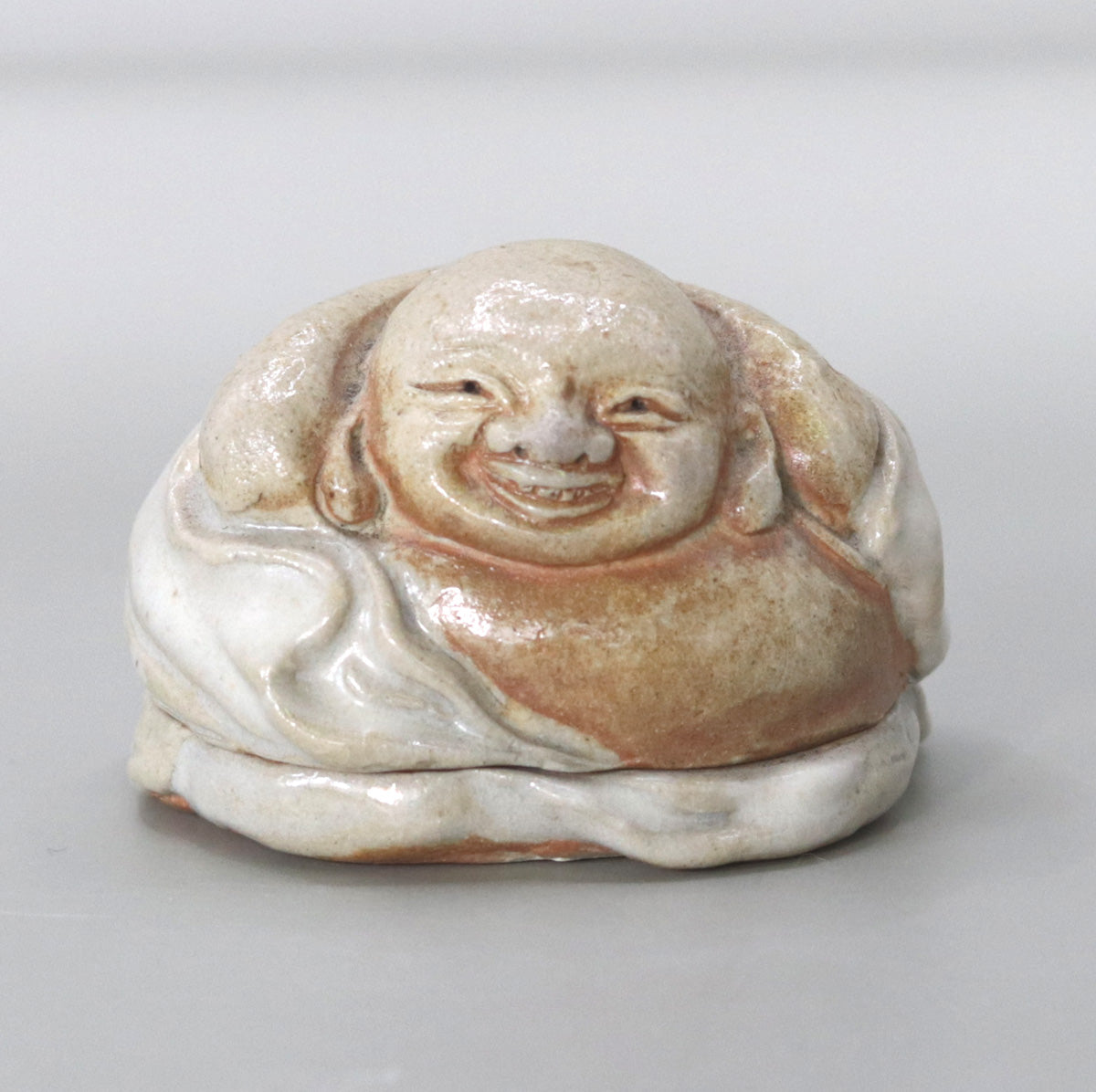
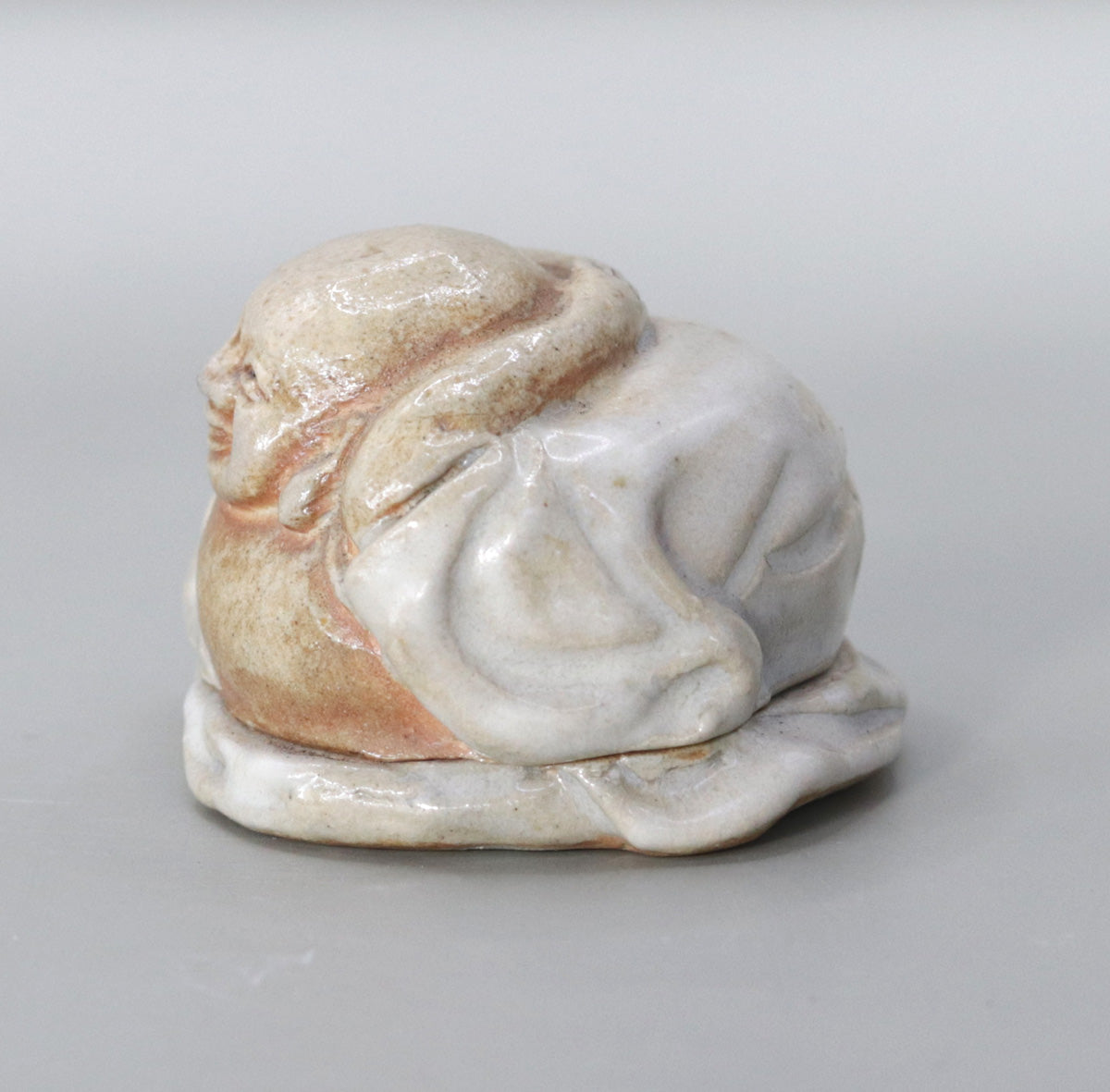
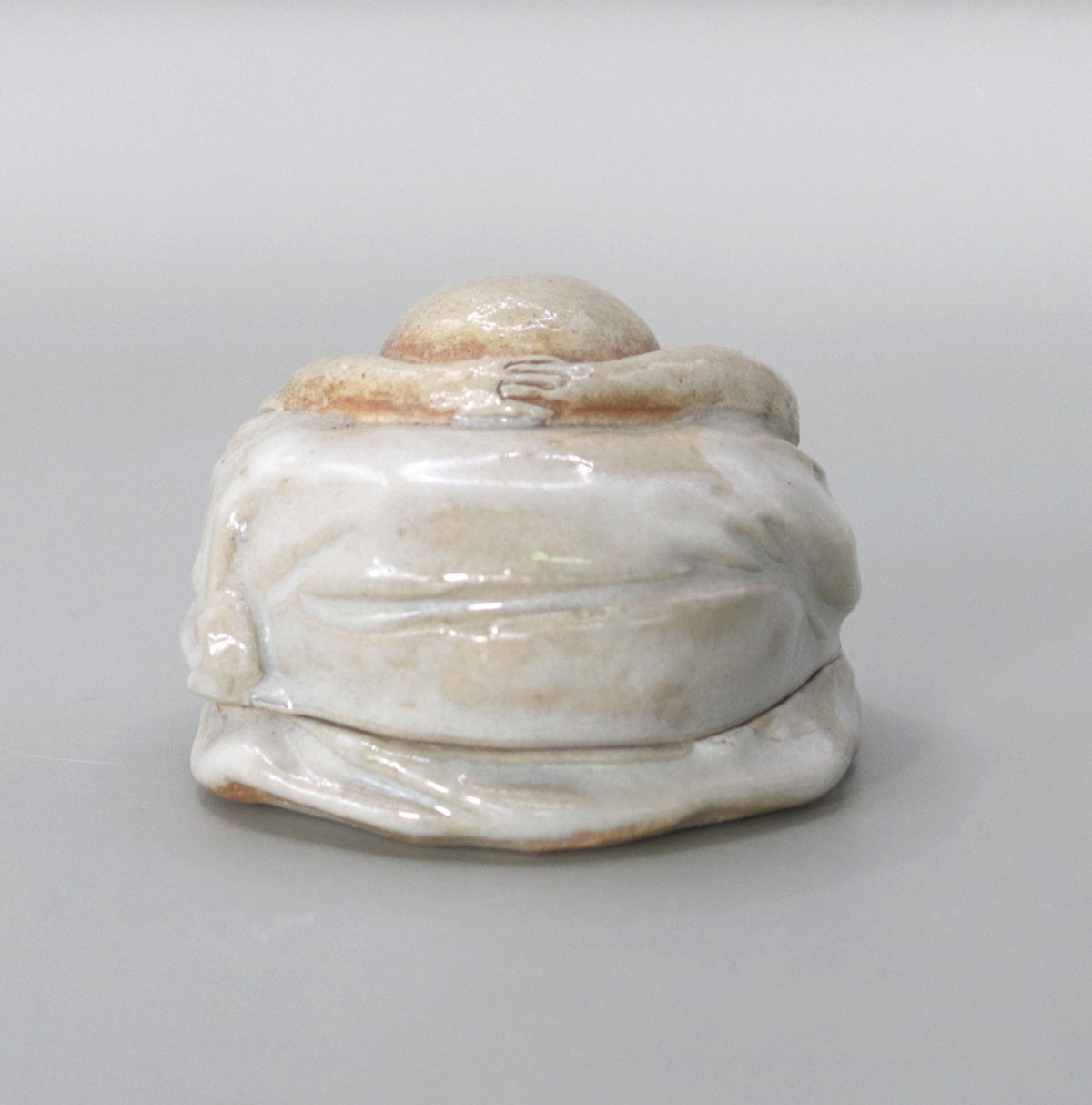


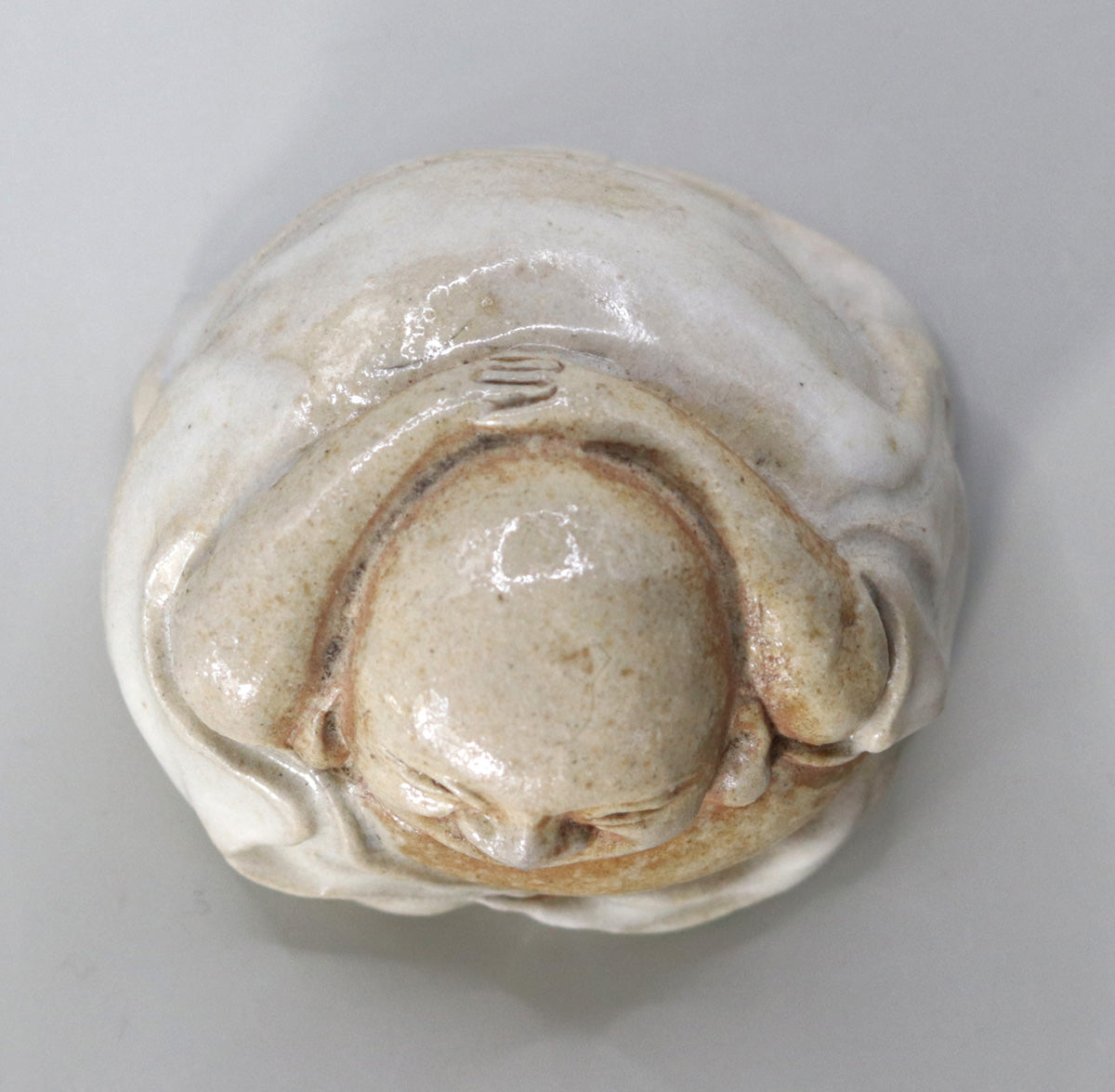
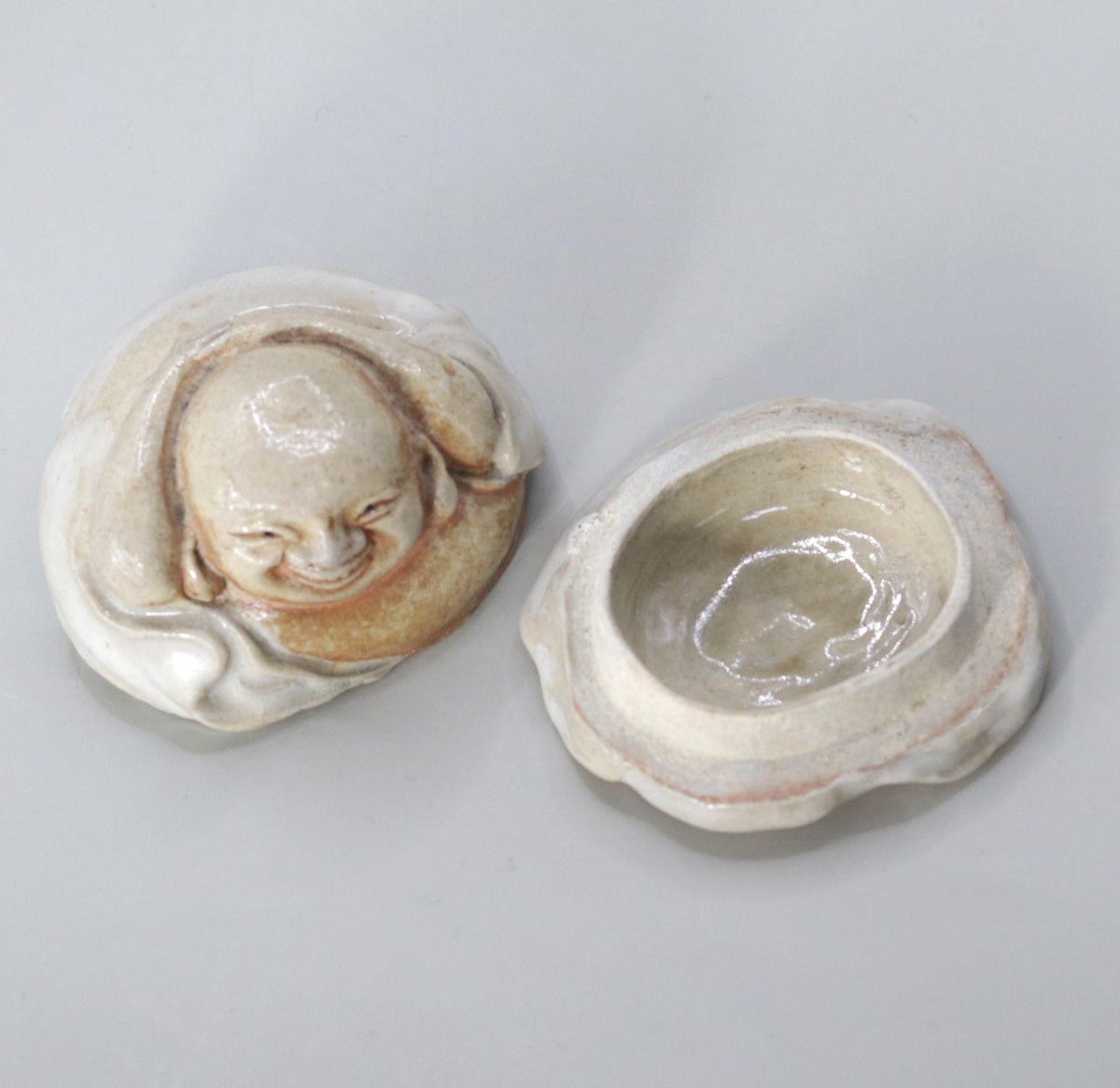
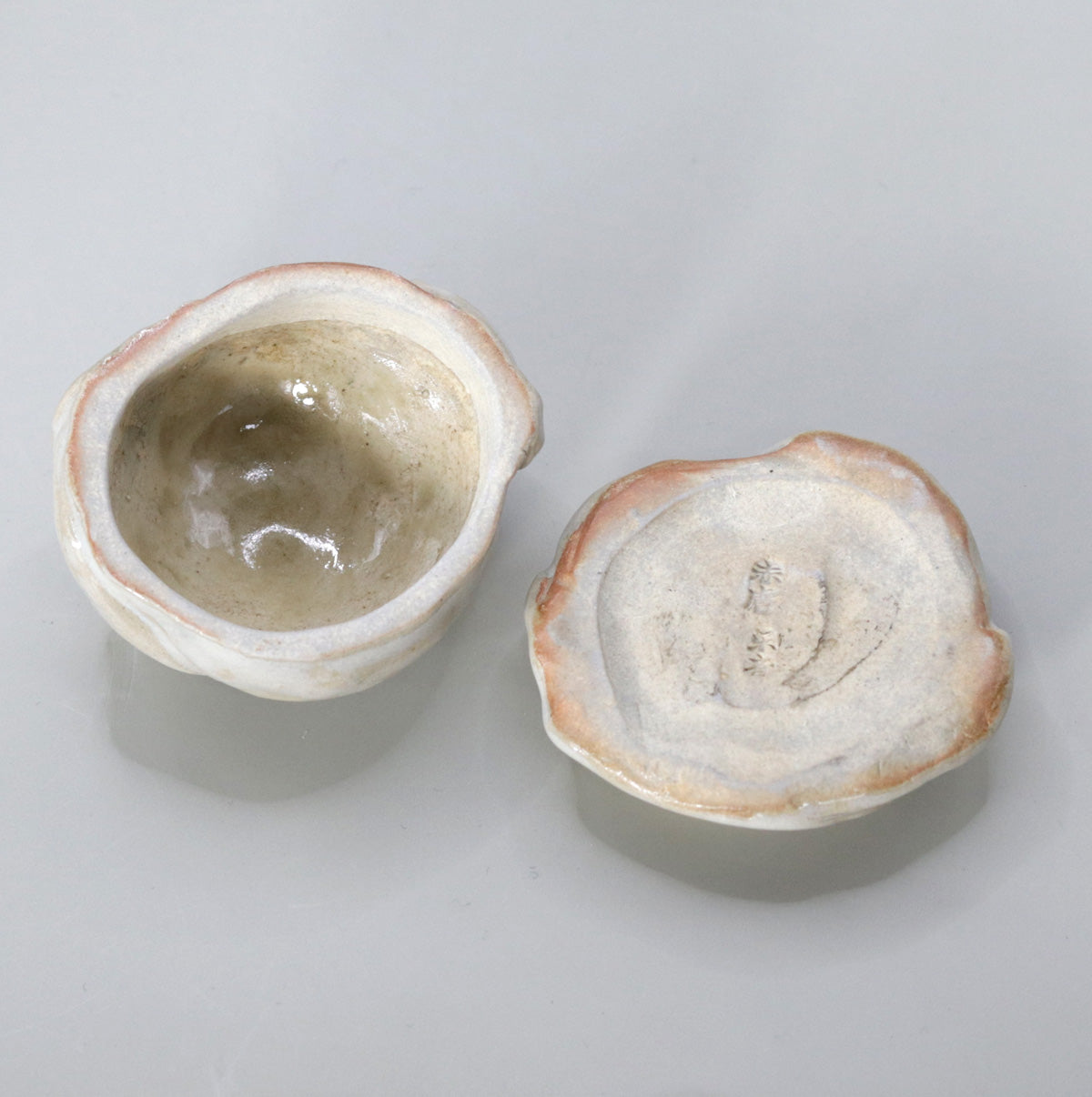
Multi-Column
-
[I will send it to you quickly and carefully]
We carefully package each product in a way that suits it best.
Also, delivery times vary depending on the piece (vessel, etc.).
Items that already come with a box will be shipped within 1-3 days of the order date.
For items that require a box to be made after your order, it will take approximately 30 days for production to be completed and then shipped.
In either case, once we have confirmed your order, we will contact you by email to inform you of the delivery date.
-
[Requests when purchasing pottery]
Even products that look the same may differ slightly in color, shape, size, etc.
The way the glaze is used, the power of the kiln, the firing method, the season, and the humidity also affect the appearance of the pottery.
Please understand the individuality of each piece of pottery and enjoy the unique warmth of handmade.
